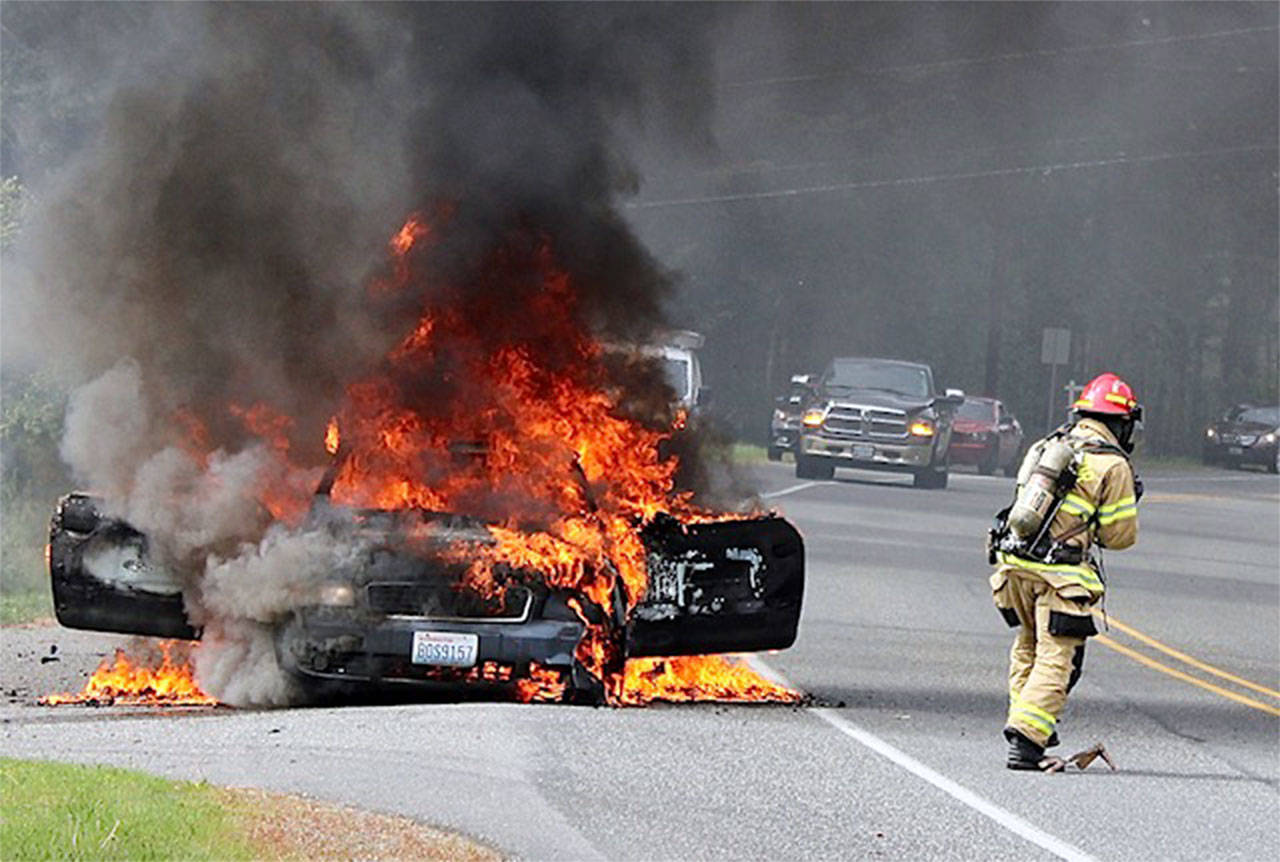Fire Chief Ray Merrill is sounding the alarm over staffing issues at the Oak Harbor Fire Department in an annual report given to city council members Tuesday night.
Merrill said he is worried about the impact of staffing issues and delayed response times on the department’s insurance rating.
“I am really concerned that if we were to be re-rated today — I fully believe we would get to a rating of five,” he said.
The department currently has a rating of four from the Washington Survey and Rating Bureau. It’s done on a scale of 10, and lower numbers are better. A department’s fire rating can impact homeowners’ insurance premiums.
Staffing shortages, city growth and the need to don personal protective equipment during the coronavirus pandemic led to longer response times, Merrill said.
Oak Harbor has 0.45 firefighters per 1,000 people, according to the report. Cities of comparable size have more than double that number with 1.25 firefighters per 1,000 people.
There are 44 firefighters total, a mix of career and paid-on-call staff. Most are paid-on-call.
“They do a fabulous job for us, but we can’t depend on them 100 percent of the time because they do have jobs elsewhere,” Merrill said of the paid-on-call staff.
The department lost about a third of its paid-on-call staff from April to September last year, Merrill explained, because they were members of the Navy and were restricted from volunteering during the pandemic.
Similar cities have 28 career firefighters on staff, while Oak Harbor only has 11. They also have two fire stations compared to Oak Harbor’s one.
“We consistently operate with one-quarter to one-third fewer resources than other fire departments of similar size,” he said.
Local firefighters responded to slightly fewer calls for service last year, with 1,403 calls. Twenty-four were structure fires.
The average response time for all calls was five minutes and 54 seconds. It was one minute and five seconds longer than in 2019. Merrill broke response times down by call type.
The average response time for fire-only calls was seven minutes and 15 seconds.
The National Fire Protection Association says turnout time, or the time it takes for an agency to receive the alarm to firefighters being en route, should be 80 seconds or less on fire calls. Merrill said his department met that goal 39 percent of the time.
The NFPA also says travel time on fire calls should be an average of four minutes, and Merrill said the department met that goal 77 percent of the time. He attributed the delay in travel time to the location of the fire station and city growth to the southwest.
Medical-only calls had an average response time of five minutes and nine seconds.
The NFPA says turnout time should be 60 seconds or less, and Merrill said the department reached that goal 40 percent of the time.
A comparison of response times by location showed the effect of having only one fire station.
The southeast quadrant of the city had the shortest response times at an average of four minutes and 38 seconds. It’s closer to the fire station, Merrill explained.
The southwest quadrant of the city had the longest average response time at six minutes and 17 seconds. It also had the highest call volume and double the number of house fires compared to other areas.
He picked out one house fire from November 2020 on Southwest Waterside Court as an example of delayed response times. The call came in just after 6 p.m., and it took firefighters eight minutes and 14 seconds to respond.
Although the fire was confined to the garage and no one was hurt, Merrill asked council members to consider how the homeowners may have felt.
“Imagine if you’re standing outside of your house and you’re watching your garage burn,” he said.
“Your Harley Davidson motorcycles, your antique motorcycles, and your house are on fire and it’s taking us eight minutes to respond.”
It would take double the number of staff to get the department where the fire chief wants it to be.
“Doubling our staffing would do it because that would put more people on shift, and we would be able to staff two vehicles instead of just one,” Merrill said in an interview, adding that it would be especially helpful for responding to overlapping calls.
His report showed that the department had overlapping calls 17 percent of the time last year.
When that happens, response times can increase because the department has to reach out to mutual aid partners, Merrill said.
Merrill said adding six staff would be a big help.
“But to have six firefighters, we would need $600,000, and the city budget won’t absorb that.”
A west side fire station is on the horizon. The city’s biennial budget identifies it as a capital project in 2026 for a projected $3.3 million based on a report from 2017. Merrill said a general obligation bond to pay for it would depend on voters.
There was some good news in his report. No firefighters contracted COVID-19 last year, and although some are nearing retirement age, the fire chief said they are not planning to leave any time soon.
“It was a year like no other,” he said.



